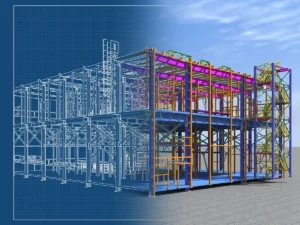Environmental Impact Assessments: Advancing Sustainable Development in Utah
Environmental Impact Assessments (EIAs) are essential tools for balancing Utah’s rapid growth with the need to protect its air, land, water, and communities. As new infrastructure and development projects emerge across regions like the Wasatch Front, Uinta Basin, and San Juan County, EIAs provide a structured process to evaluate impacts on natural resources and human health. They help ensure that they align with both state policy and federal environmental law.
Understanding Environmental Impact Assessments in Utah
Purpose and Process
Environmental Impact Assessments (EIAs) evaluate the potential environmental impacts of proposed development projects. In Utah, this typically involves preparing either a draft Environmental Assessment (EA) or a full Environmental Impact Statement (EIS), depending on potential severity. The process includes public scoping, scientific evaluation, alternatives analysis, and mitigation planning. This approach ensures long-term sustainability.
Regulatory Framework
EIAs in Utah operate under a combination of federal and state policies:
- National Environmental Policy Act (NEPA): Requires federal agencies and federally funded projects to conduct EIAs. Administered by agencies like the Bureau of Land Management (BLM).[2]
- Utah Department of Environmental Quality (DEQ): Oversees air, water, and waste-related environmental evaluations at the state level.[3]
- Utah Division of State Parks and Recreation: Participates in EIAs concerning parkland and recreation development.[1]
- Utah Environmental Policy Act (UEPA): Governs assessments for state-funded actions.
Stakeholders and Public Engagement
Stakeholders include government agencies, developers, consultants, and community members. Local input is especially important for shaping projects that reflect the values and concerns of the community. Universities such as Utah State University and the University of Utah provide technical expertise and training in environmental assessment, policy, and sustainability.[8]
Public participation through hearings and comment periods is required by law, making the process transparent and responsive.
EIAs and Sustainable Development in Utah
Environmental and Social Impacts
EIAs in Utah consider how projects will affect geology, water resources, wildlife, air quality, infrastructure, and cultural sites. They aim to identify potential before damage occurs, allowing for mitigation strategies.
Land Use and Planning
Integrating EIA results with land use planning enables local governments to guide growth responsibly. From wetlands near Salt Lake City to energy corridors in rural counties, EIA findings support policy decisions that benefit the community.
Case Study: Mountain Accord
The Mountain Accord project in the Central Wasatch Mountains addressed competing demands for recreation, water supply, and transportation. Its EIA-driven process led to regional land-use planning that balanced community needs.[4]
Current Topics in Utah’s Environmental Impact Assessments

1. Fast-Tracked Uranium Mining in San Juan County
In May 2025, the Department of the Interior authorized a 14-day fast-track EIA for the Velvet-Wood uranium mine. Governor Cox and local leaders praised the streamlined permitting for aligning with energy goals.[1][2]
2. Legislative Reforms: HB 85 and Permitting Policy
Utah House Bill 85 expands the Division of Air Quality’s permit-by-rule system to speed up assessments for low-risk facilities like asphalt plants and emergency generators.[3]
3. Uinta Basin Railway: EIS Under Review
A Supreme Court review is underway regarding the Uinta Basin Railway’s Environmental Impact Statement (EIS). The case could redefine how NEPA is applied to indirect climate and pollution impacts. [4]
4. Utah Inland Port Expansion
The Utah Inland Port Authority is extending operations to Spanish Fork, Box Elder County, and Beaver County. Concerns focus on emissions and impacts to natural resources near the Great Salt Lake wetlands.[5]
5. Coal-Fired Power Plant Emissions
A 2025 Reuters report highlighted that Utah’s Hunter and Huntington plants rank among the top NOx emitters nationally. have prompted scrutiny under state and federal environmental protection laws.[6]
Best Practices for Conducting Effective EIAs
- Scientific Rigor: Use updated climate and ecological data, supported by tools like GIS and predictive modeling.
- Transparency: Maintain public access to draft and final documentation, including environmental assessments and EIS summaries.
- Community Involvement: Incorporate early local input to shape project alternatives.
- Training and Certification: Programs at Utah State University help professionals meet NEPA and state-level requirements.[8]
Future of EIAs in Utah
Innovation
Emerging technologies such as machine learning and real-time sensors improve monitoring and forecasting of project impacts.
Environmental Justice
EIAs increasingly consider equity, ensuring that projects do not disproportionately affect low-income or Indigenous communities, particularly near extraction sites or industrial corridors.
Forecasting and Adaptation
Proactive evaluations help anticipate drought, fire, and climate impacts tied to infrastructure and natural resource use.
Interagency Collaboration
Ongoing collaboration between local, state, and federal entities—including BLM and the Utah Division of Air Quality—ensures consistency in environmental policy and infrastructure planning.
Resources and Tools for EIAs
- Utah Department of Environmental Quality (DEQ): https://deq.utah.gov
- Utah Division of Air Quality – EIA Guidelines: https://deq.utah.gov/air-quality/emissions-impact-assessment-guideline-preface
- Utah State University NEPA Training Program: https://www.usu.edu/degrees-majors/national-environmental-policy-act-nepa_icp
- University of Utah S.J. Quinney College of Law: Offers environmental law and policy education.
FAQs
What is the difference between an EA and an EIS? An EA is a concise document to determine if significant impacts are likely. An EIS is required when those impacts are confirmed. For more on this topic, you can explore environmental site assessment phase I and II.
Who prepares EIAs in Utah? Federal agencies, the BLM, state agencies, and private consultants all prepare or oversee EIAs depending on project scope and funding.
How can the public participate? Citizens can attend hearings, submit comments on draft documents, and review online postings.
Are EIAs required for all projects? No. Only projects with potential significant environmental impact or federal/state funding typically require them.
Key Takeaways
- EIAs ensure informed decision-making for infrastructure and resource development.
- Utah-specific policies, geography, and community priorities shape the process.
- Collaboration between agencies and the public improves outcomes.
- New legislation and technologies are influencing how Utah evaluates projects.
References
- Utah Department of Environmental Quality – https://deq.utah.gov
- National Environmental Policy Act (NEPA) – https://www.epa.gov/nepa
- Utah Legislature: HB 85 – https://le.utah.gov/~2025/bills/static/HB0085.html
- Save Our Canyons: Mountain Accord – https://saveourcanyons.org/resources/mountain-accord
- The Guardian: Uinta Railway Review – https://www.theguardian.com/us-news/2024/dec/10/supreme-court-oil-railway-utah
- Reuters: Coal Plant Emissions Report – https://www.reuters.com/investigations/buffetts-berkshire-hathaway-operates-dirtiest-set-coal-fired-power-plants-us-2025-01-14/
- Utah Division of Air Quality – https://deq.utah.gov/air-quality/emissions-impact-assessment-guideline-preface
- Utah State University NEPA Certificate – https://www.usu.edu/degrees-majors/national-environmental-policy-act-nepa_icp





